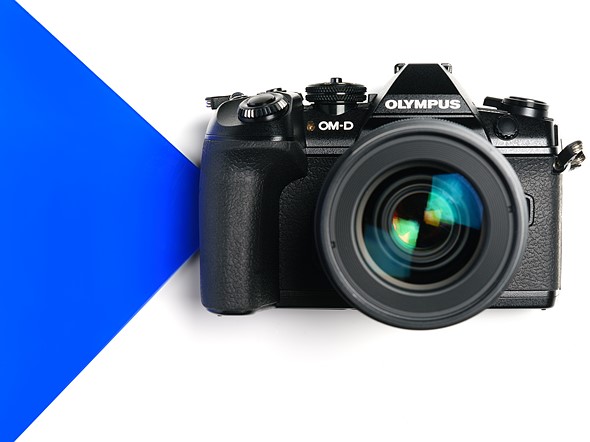Olympus' OM-D EM-1 has been one of our favorite mirrorless cameras since its introduction in 2013. It impressed us with its build quality, image quality, ridiculous amount of manual control (that's a compliment) and boatload of features. Three years later, it's still very competitive.
To say that Olympus has topped itself with the E-M1 Mark II is an understatement. The company told us that this camera was overdeveloped, and it shows. Its blazing dual quad-core processors allow for 60 fps burst shooting (18 fps w/continuous autofocus) and ridiculously fast image playback. Combine that with one of the most advanced autofocus systems we've seen and 5-axis in-body image stabilization ? along with what made the original so impressive ? and the Mark II is a force to be reckoned with.
One thing about the Mark II that makes us pause is its price. Its MSRP of $2000 is higher than that of Nikon's D500 and full-frame D750 (both are $1800), and the Mark II's Four Thirds is small in comparison to the D500 and other APS-C cameras and tiny versus full-framers.
Key Specifications
- 20MP Live MOS sensor
- 5-axis in-body image stabilization system
- 121-pt hybrid AF system
- 60 fps burst shooting (18 fps with continuous AF)
- Fully articulating 3" LCD display
- High-res electronic viewfinder
- Cinema (DCI) and UHD 4K video
- 50MP High-Res Shot mode
- Weather-sealed body
- USB 3 (Type-C)
Compared to Olympus E-M1 and Nikon D500
We are including the D500 here since it's target audience is in the same vein: those who want high-speed shooting and an advanced AF system. As mentioned above, they both have a similar MSRP.
* 6.5 stops with Olympus 12-100mm lens
Olympus E-M1 II Olympus E-M1 Nikon D500 Sensor 20MP Four Thirds 16MP Four Thirds 21MP APS-C ISO range (expanded) 64-25,600 100-25,600 50-1,640,000 Image stabilization In-body (up to 5.5 stops*) In-body (up to 4 stops) Lens only Autofocus system 121-point hybrid 81-point hybrid 153-pt phase-detect Burst mode (electronic) 60 fps (AF-S)
18 fps (AF-C)11 fps (AF-S) N/A Burst mode (mechanical) 15 fps 10 fps (AF-S, no IS)
6.5 fps (AF-C)10 fps LCD 3" fully articulating touchscreen 3" tilting touchscreen 3.2" tilting touchscreen Viewfinder 2.36M-dot EVF (0.65x equiv. mag) Optical
(0.67x equiv. mag)Flash GN 9.1 external GN 7 external None Video capture DCI/UHD 4K (237Mbps) 1080/30p (24Mbps) UHD 4K (144Mbps) Video output 4:2:2 over HDMI N/A 4:2:2 over HDMI I/O ports Headphone, mic, remote, flash sync, USB 3, HDMI Mic, remote, USB, HDMI Headphone, mic, remote, flash sync, USB 3, HDMI Storage Dual SD (UHS-II/UHS-I) SD (UHS-I) SD + XQD Wireless Yes Yes Yes, with Bluetooth and NFC Weather-sealed Yes Yes Yes Battery life (****) 440 shots 350 shots 1,240 shots Dimensions 134 x 91 x 69mm 130 x 94 x 63mm 147 x 115 x 81mm Weight (****) 574g 497g 760g
Accessories
At the time of its launch Olympus also debuted a number of accessories to go along with the E-M1 Mark II. The one most people will likely purchase is the HLD-9 battery grip ($249), which doubles battery life and offers two control dials and two custom buttons. It also features a DC-in jack, so the battery can be charged right inside the grip via an outrageously priced AC adapter.
Also available is the powerful FL-900R external flash ($299), which has a guide number of 58m, built-in video lamp, wireless control and the ability to fire at 10 fps. The STF-8 Macro Flash Set ($479) has fully adjustable (and removable) left and right flashes, manual control down to 1/128 power and support for focus stacking. Both of these flashes are weather-sealed.
For those who want to take the camera underwater there's the PT-EP14 housing ($1299). It works down to 65m/196ft and numerous brackets, weights and arms are available. Naturally, you'll need a housing for whatever lens you attach.
Więcej...








 Odpowiedz z cytatem
Odpowiedz z cytatem